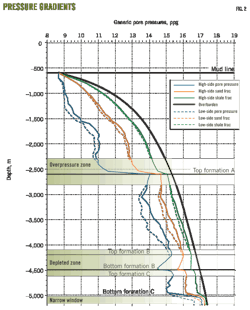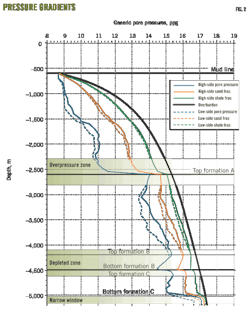Colombian subsidiaries of two Canadian companies have drilled a heavy oil discovery on the CPE 6 block in Colombia's Llanos basin that appears to have light oil potential.
The Guairuro discovery came in July 2010 on the southwesternmost of the eight frontier heavy oil development blocks for which Colombia secured full participation in an invitation-only proceeding. The country awarded the blocks in July 2008 for 3 years.
Pacific Rubiales Energy Corp., Toronto, and Talisman Energy Inc., Calgary, share the CPE 6 block 50-50.
ExxonMobil Corp. said earlier this year it was planning an exploration program of 2D seismic surveys and drilling stratigraphic core holes on 6.4 million acre CPE 3, on trend with Venezuela's Orinoco heavy oil belt.
And BHP Billiton Petroleum, operator of 7.75 million acre CPE 5, said it might drill as many as five wells in Colombia this year.
Pluspetrol SA, Buenos Aires, Korea National Oil Corp., and China's CNPC International Ltd. shot seismic on CPE 7 but suspended activity earlier this year.
Talisman, which operates CPE 8 in addition to its interest in CPE 6, augmented its already large position in Colombia in early August with acquisition of a 49% interest in BP Exploration Co. (Colombia) Ltd., with Colombia's state Ecopetrol as (OGJ Online, Aug. 3, 2010). The deal gave Talisman an interest in the OCENSA oil pipeline, the Llanos basin's only oil outlet to the Covenas export terminal.
Pacific Rubiales has access to capacity on OCENSA to handle its Rubiales field heavy oil output.
Shell hadn't announced progress on its Llanos heavy oil blocks by this writing in mid-August.
The technical evaluation agreements called for expenditures to total $322 million on the eight blocks, from a low of $9.1 million on CPE 3 to highs of $64 million on CPE 2 and $79 million on CPE 4.
Guairuro oil discovery
Petrophysical analysis of the Guairuro-1 stratigraphic test on CPE 6 indicated 28 ft of net pay with 28% average porosity and identified oil-bearing sandstones to 3,377 ft measured depth, 2,540 ft true vertical depth subsea (OGJ Online, July 14, 2010).
This results in a 45-ft gross oil column in Carbonera C7 and the basal sandstones of the Mirador formation.
Pacific Rubiales said cores also show evidence of possibly lighter oil in two intervals of the Carbonera C7 sands, which may indicate that oil accumulations at these upper levels could also extend to the northern part of the block.
The 61⁄8-in. stratigraphic slim hole cannot be production-tested, and Pacific Rubiales was to pressure-test 30 levels and collect two fluid samples from the upper C-7 intervals.
The company was to drill five more wells in the 2010 third quarter to honor the CPE 6 minimum work program to investigate the regional extent of the basal sandstone play found on the Rubiales and Quifa blocks 100 km east-northeast of CPE 6. Four wells drilled on northern CPE 6 in the early 1980s showed sandstones with heavy oil.
Guairuro-1 exhibited oil-impregnated cores in every sandstone from Carbonera C-7 down to 3,377 ft MD in Mirador basal sandstones, indicating that oil had enough mobility to reach more than 100 ft vertically, possibly through faults, from the basal sandstones into the C-7 units, Pacific Rubiales said.
Regional extension
Pacific Rubiales said its interest in the CPE 6 block was to investigate the regional extent of the Basal sandstone play found in the Rubiales and Quifa blocks 100 km east-northeast of CPE 6.
The 1980s Manacacias-1 and 2, Los Kioskos 1, and SM-5 wells encountered oil-bearing sandstones that were interpreted to represent the same play found on Rubiales and Quifa, the company said.
Los Kioskos and the Manacacias wells tested 10.5-12° gravity oil but were plugged as uneconomic because of the heavy oil and the distance from then-existing production facilities. SM-5 was abandoned for a mechanical condition that didn't allow tests.
Revised petrophysical evaluation of the four 1980s wells, Guairuro-1 data, and seismic interpretation of the stratigraphic pinchout of the Basal sandstones has allowed the company to remap the prospect on which the five wells are located and has established that the possible area for the stratigraphic trap can reach at least 25,200 acres from the pinchout to the average oil-water contact.
Pacific Rubiales was to integrate 678 line-km of 2D seismic shot as part of the CPE 6 work commitment with existing data to remap the trap and identify locations for the next five wells. The company will move toward production once it elects to convert the TEA to an exploration and production contract.
More Oil & Gas Journal Current Issue Articles
More Oil & Gas Journal Archives Issue Articles
View Oil and Gas Articles on PennEnergy.com


